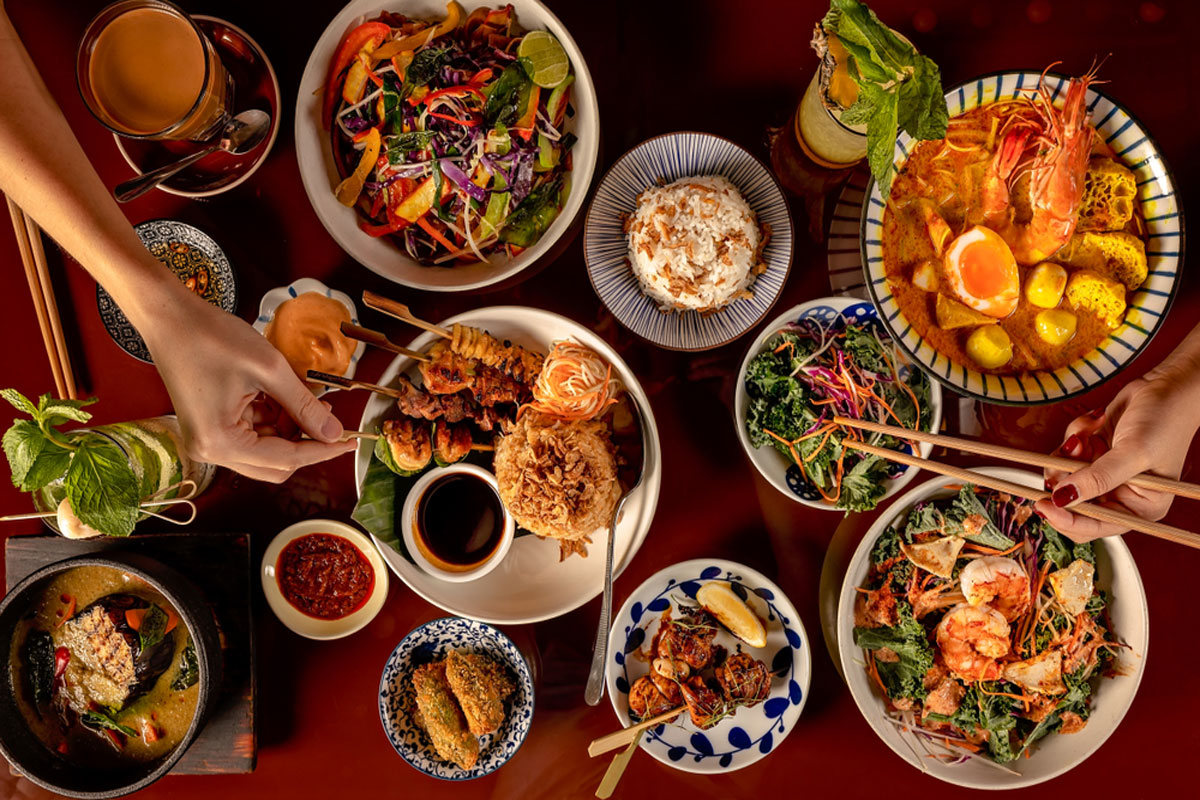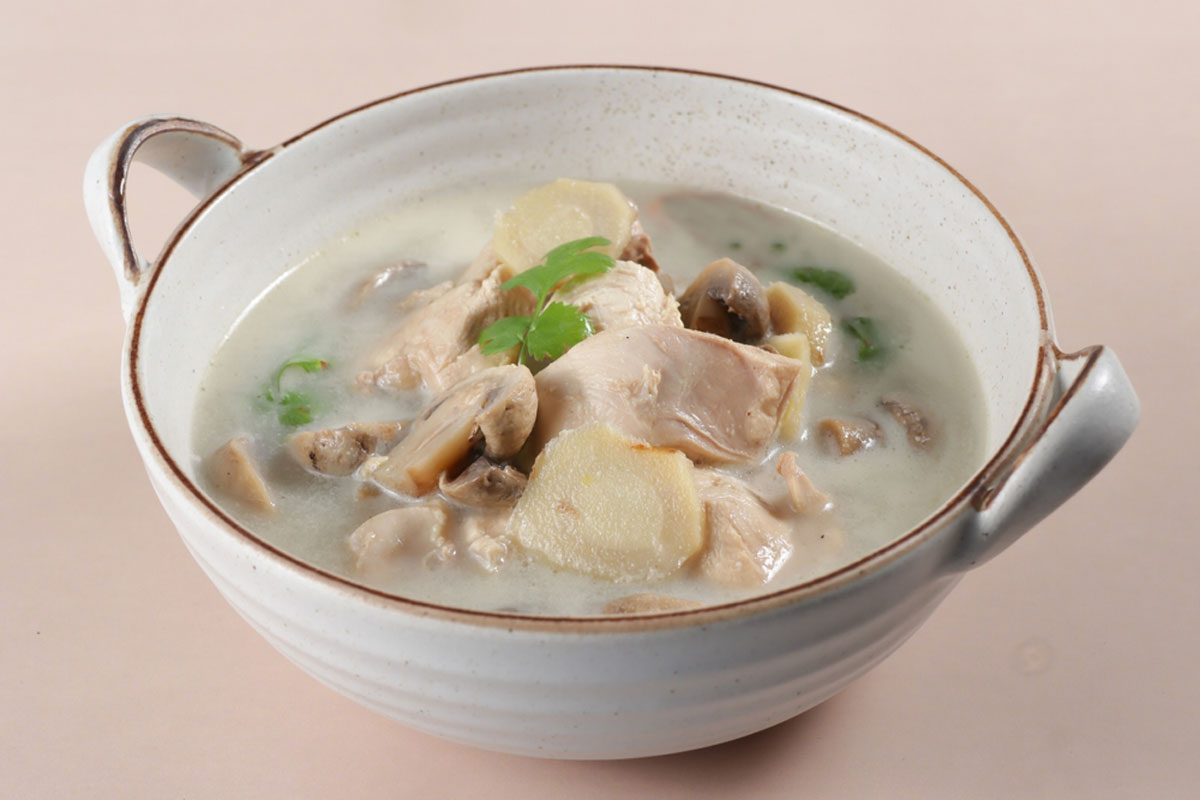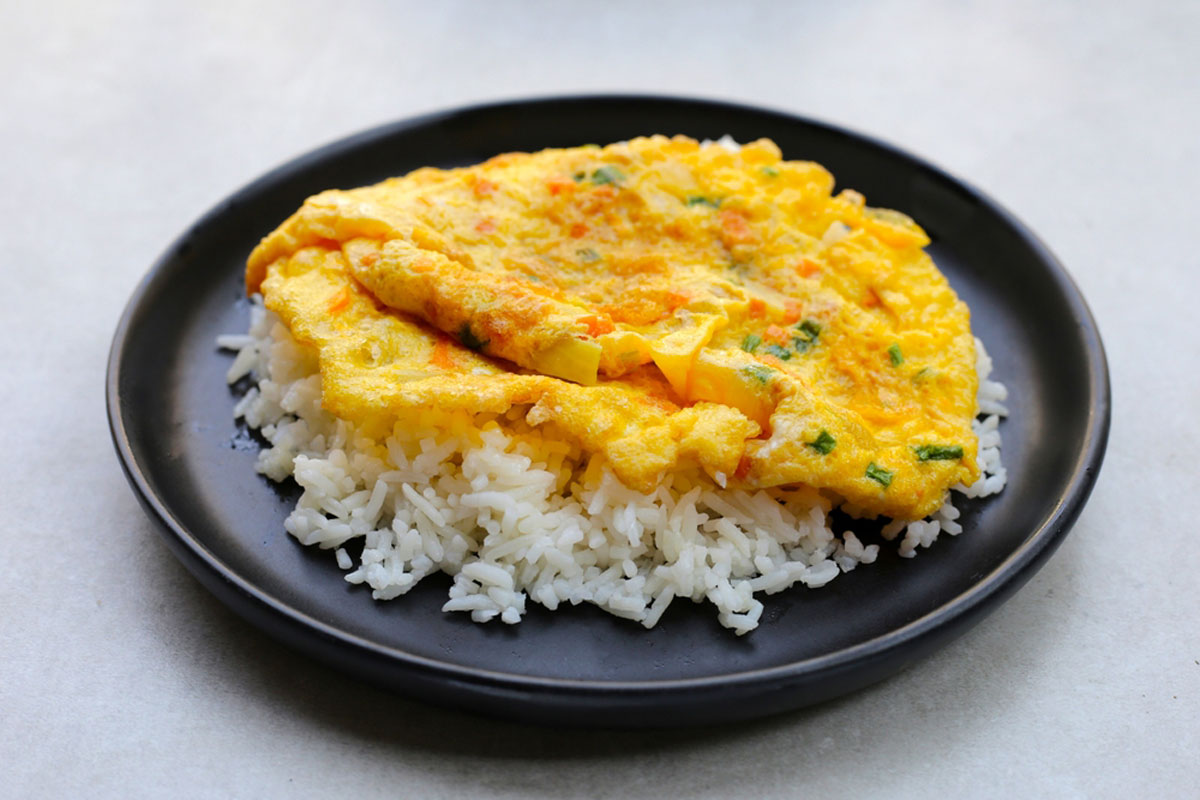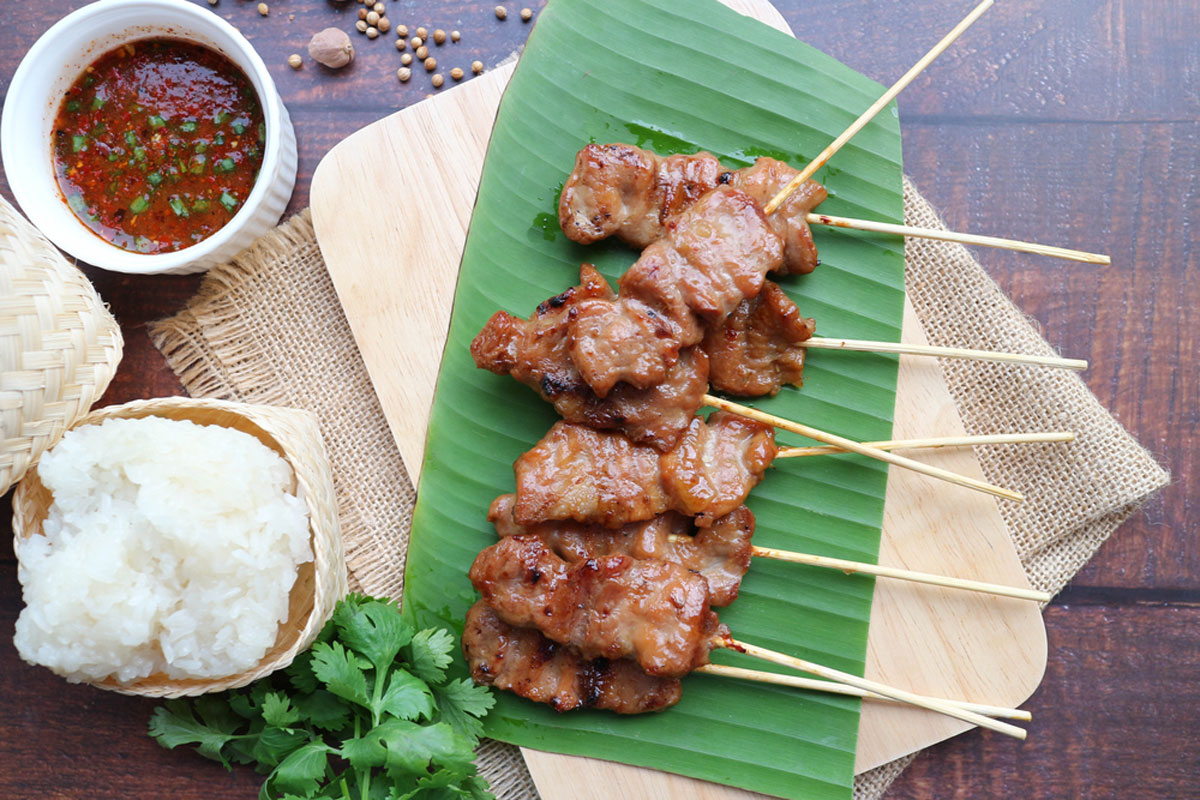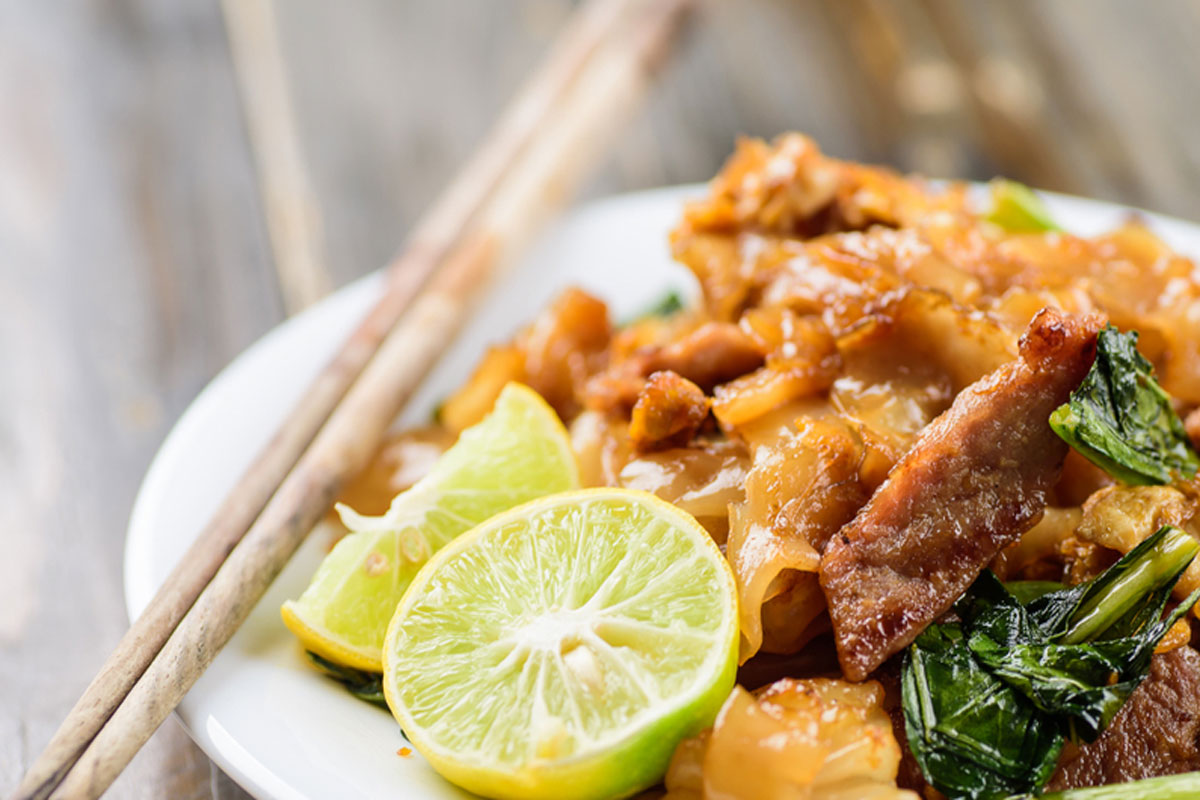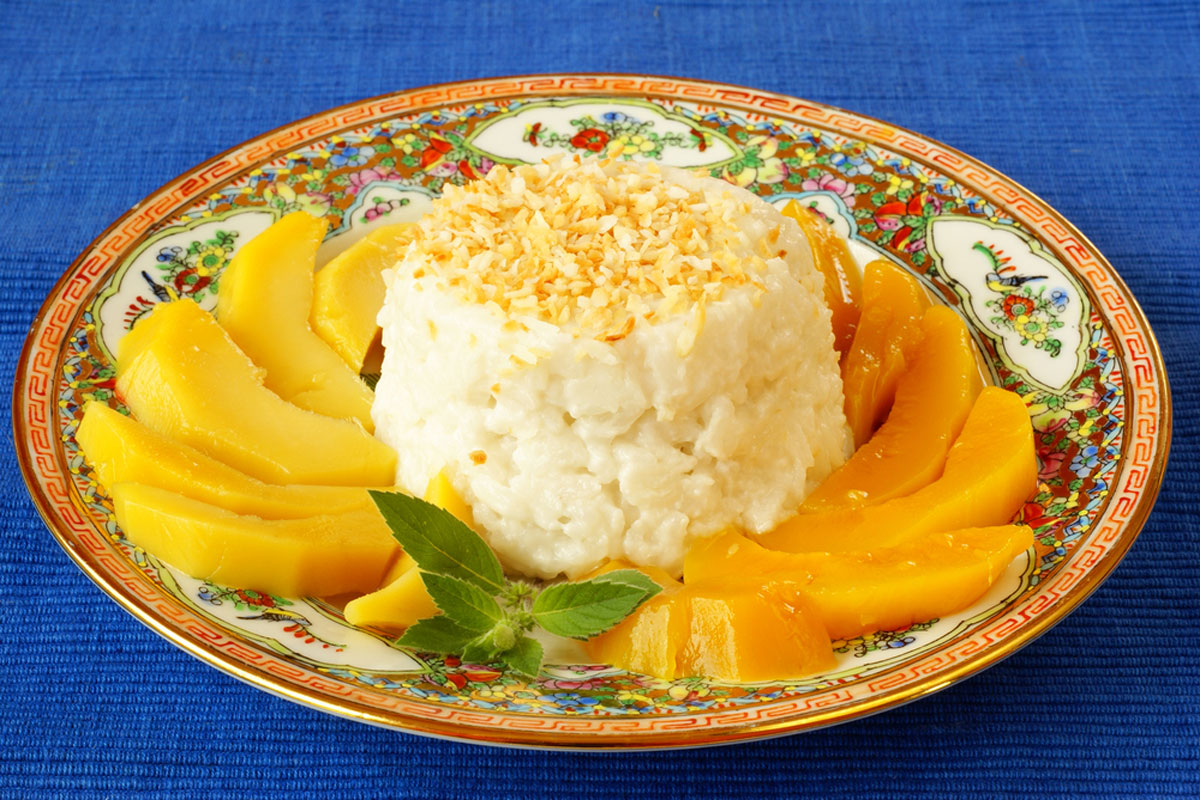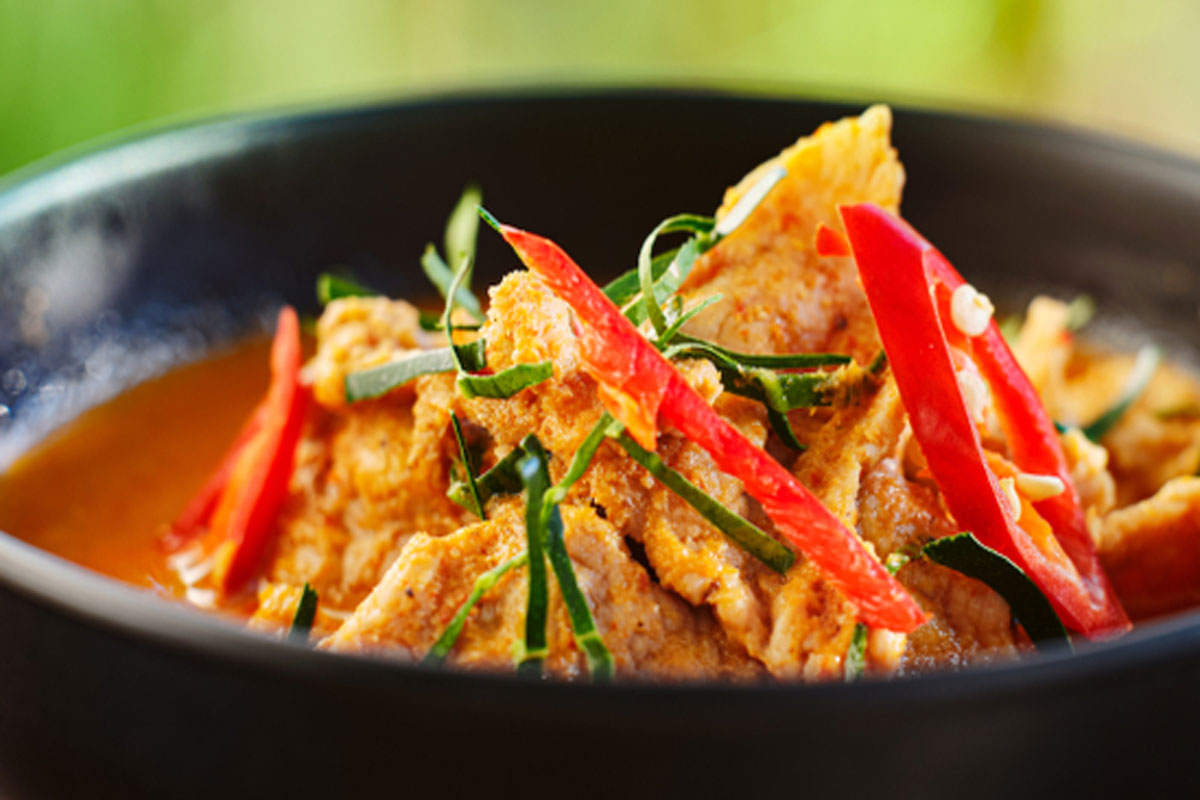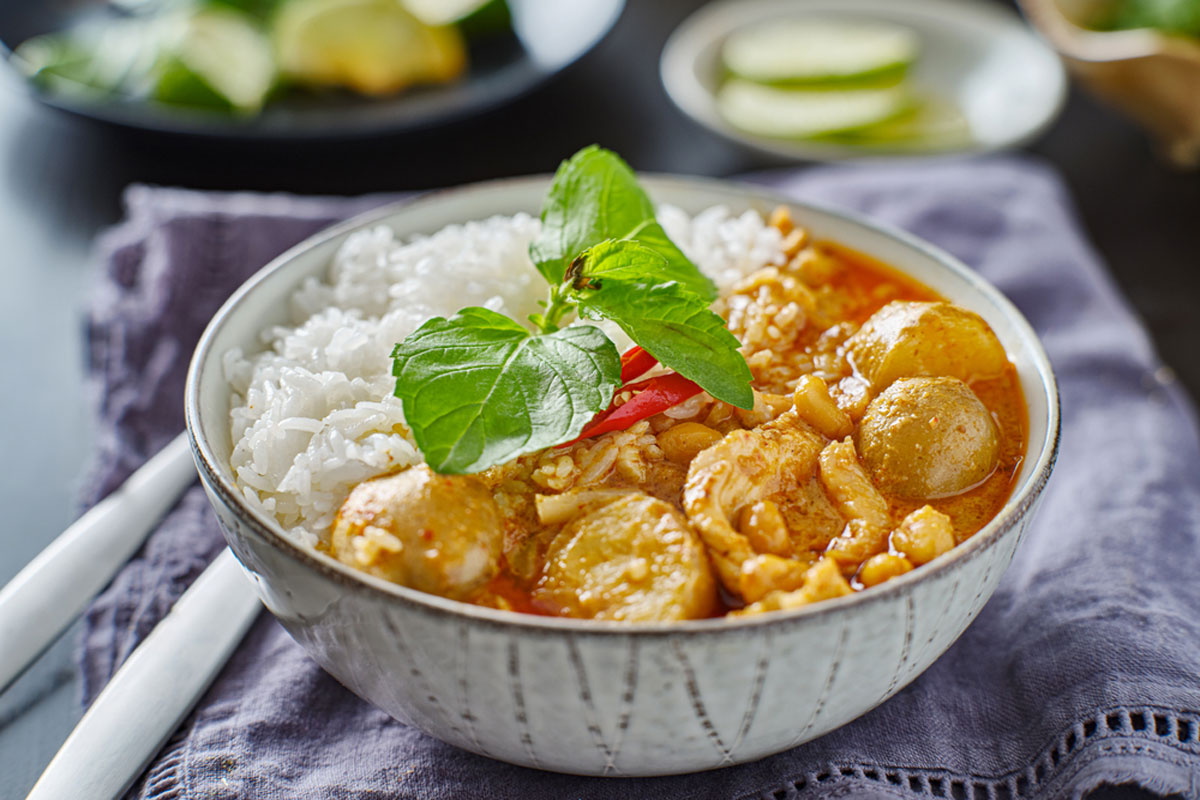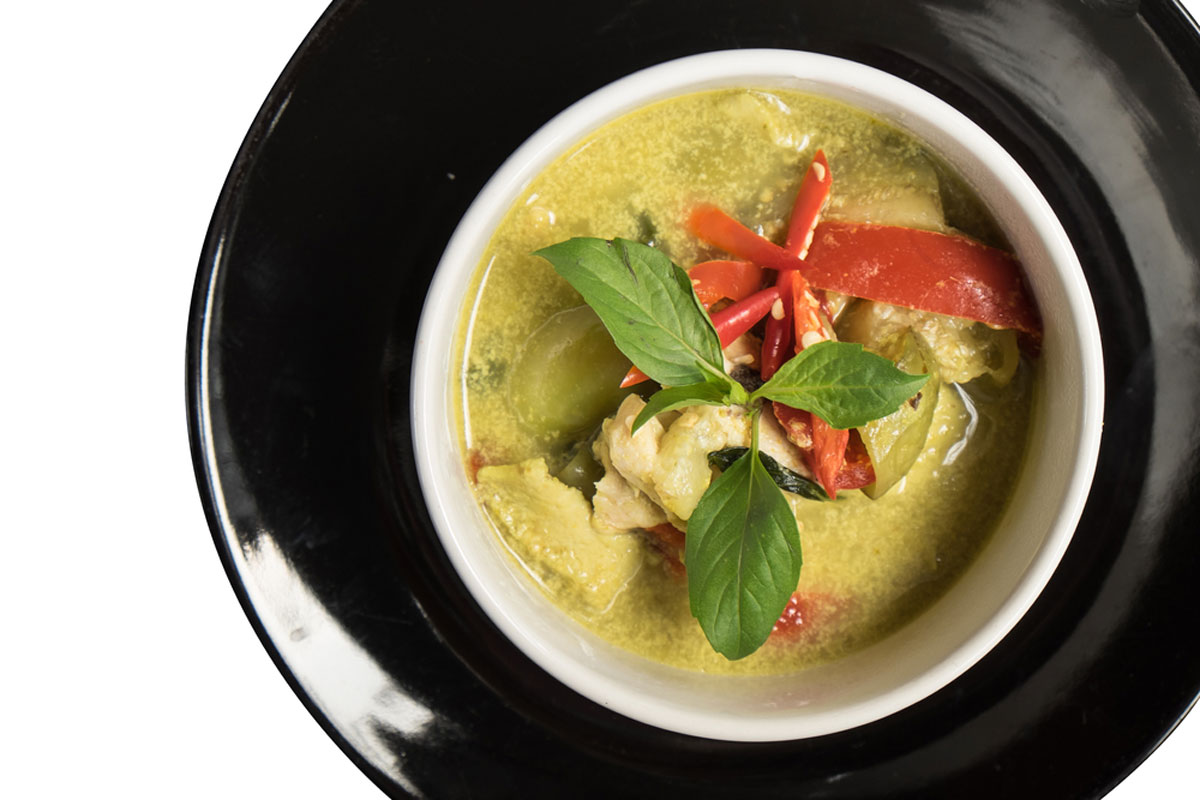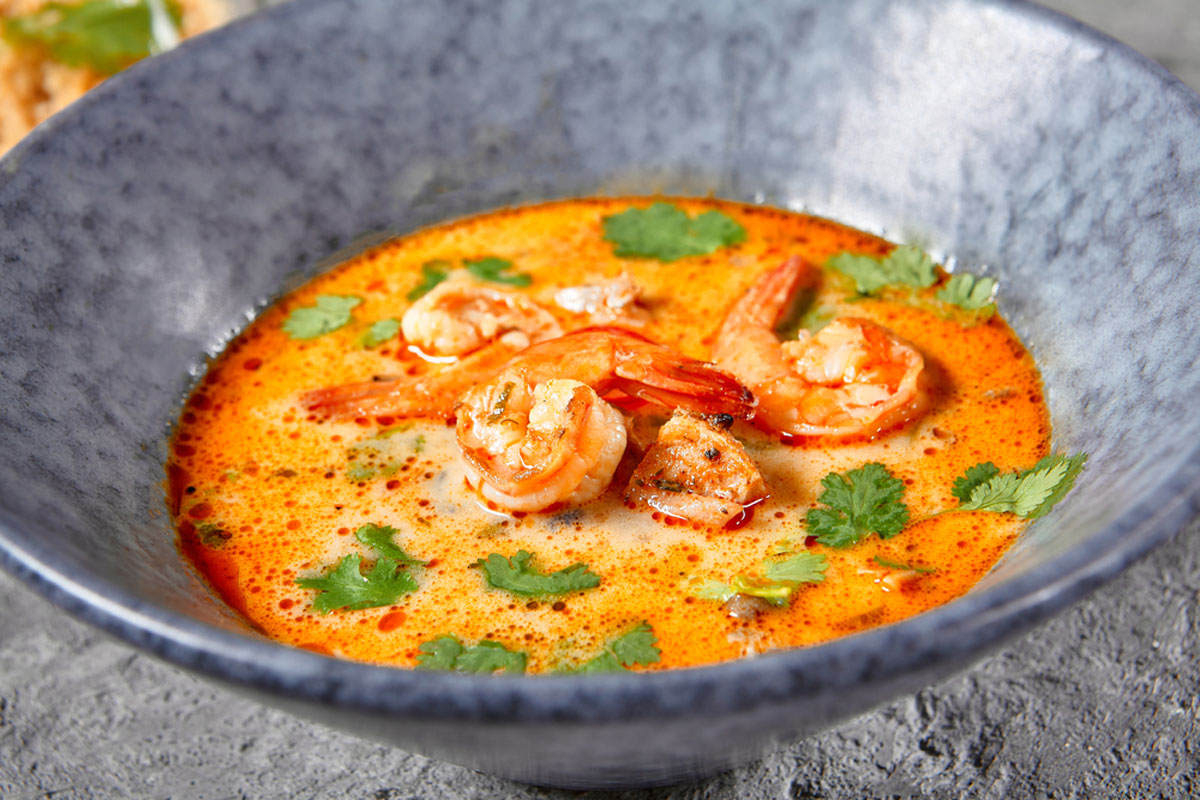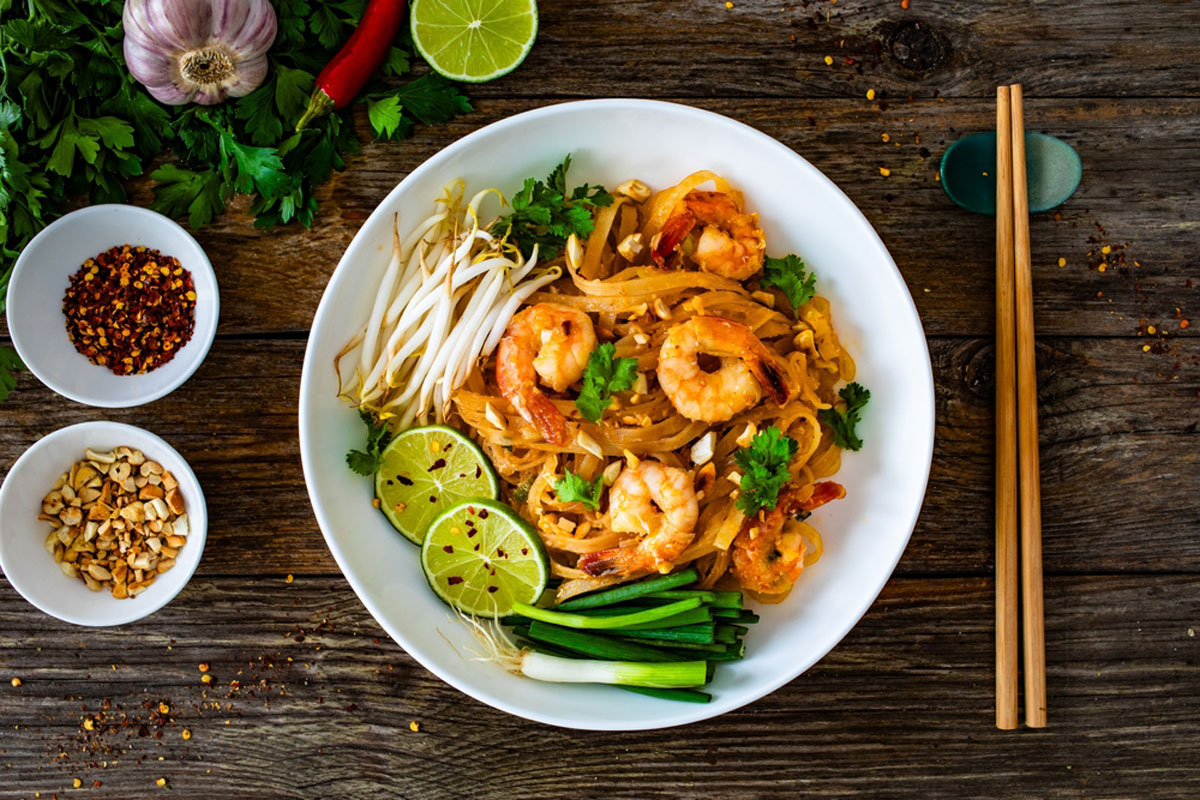Introduction to Thai Cuisine
Thailand, often referred to as the “Land of Smiles,” is renowned for its rich cultural heritage, stunning landscapes, and, most notably, its vibrant and diverse cuisine. Thai food is a harmonious blend of flavors, colors, and textures that excite the palate and offer a unique culinary experience. In this virtual culinary journey, we will explore the essence of Thai cuisine, from its fundamental flavors to its iconic dishes and the cultural significance behind them.
The Essence of Thai Cuisine
Thai cuisine is characterized by its balance of five fundamental taste senses: sweet, sour, salty, bitter, and spicy. This intricate balance is achieved through the use of a variety of fresh herbs and spices, along with essential ingredients like fish sauce, lime, tamarind, and palm sugar. The result is a complex and delightful interplay of flavors that defines Thai cooking.
Key Ingredients in Thai Cooking:
- Herbs and Spices: Fresh herbs like lemongrass, kaffir lime leaves, and galangal are staples in Thai kitchens. Chilies, garlic, and shallots add depth and heat to dishes.
- Condiments: Fish sauce, soy sauce, and oyster sauce are commonly used to season food, providing a salty and umami flavor.
- Coconut Milk: Used in both savory and sweet dishes, coconut milk adds a rich, creamy texture and a subtle sweetness.
- Rice and Noodles: Rice is a fundamental part of Thai meals, with jasmine rice being the most popular. Noodles, such as rice noodles and egg noodles, are also widely used in various dishes.
The Art of Balance
One of the hallmarks of Thai cuisine is its emphasis on balance and harmony. Each dish is crafted to achieve a perfect blend of flavors, ensuring that no single taste dominates. This balance is not just limited to individual dishes but also extends to the composition of a meal, where a variety of dishes are served together to create a well-rounded dining experience.
Regional Variations
Thailand’s diverse geography and cultural influences have led to distinct regional variations in its cuisine:
- Northern Thai Cuisine: Known for its milder, herbaceous flavors and the use of sticky rice. Signature dishes include Khao Soi (coconut curry noodle soup) and Sai Oua (northern Thai sausage).
- Northeastern Thai Cuisine (Isaan): Characterized by bold, spicy, and sour flavors. Sticky rice, grilled meats, and spicy salads like Som Tum (papaya salad) are staples.
- Central Thai Cuisine: The most familiar to international audiences, this region’s cuisine features a balance of flavors and includes famous dishes like Pad Thai and Tom Yum Goong (spicy shrimp soup).
- Southern Thai Cuisine: Known for its intense heat and use of coconut milk and seafood. Dishes like Gaeng Tai Pla (fish kidney curry) and Khao Yam (rice salad) are typical.
Street Food – The Heartbeat of Thai Cuisine
Thai street food is world-renowned for its vibrant flavors, affordability, and sheer variety. The bustling streets of Bangkok, Chiang Mai, and other cities come alive with food vendors offering everything from savory snacks to hearty meals. In this part of our culinary journey, we’ll explore the essence of Thai street food, highlighting some must-try dishes and the cultural significance behind this lively food scene.
The Vibrant World of Thai Street Food
Street food in Thailand is more than just a quick meal; it’s a cultural experience. The bustling markets and roadside stalls offer a sensory overload of sights, sounds, and smells. Here, locals and tourists alike gather to enjoy delicious, freshly-prepared dishes that capture the essence of Thai cuisine.
Key Elements of Thai Street Food:
- Freshness and Flavor: Ingredients are often sourced locally and prepared on the spot, ensuring freshness. The flavors are bold, with a perfect balance of sweet, sour, salty, and spicy.
- Affordability: Street food is typically inexpensive, making it accessible to everyone. This affordability contributes to its popularity among locals and visitors.
- Variety: The range of options is staggering, from grilled skewers and noodle soups to sweet desserts and tropical fruits.
Must-Try Street Food Dishes
1. Pad Thai
- Description: Stir-fried rice noodles with shrimp, tofu, eggs, and bean sprouts, garnished with peanuts, lime, and chili flakes.
- Why It’s Popular: Pad Thai is a perfect introduction to Thai street food. Its combination of textures and flavors makes it a universally loved dish.
2. Som Tum (Green Papaya Salad)
- Description: A spicy and tangy salad made from shredded green papaya, tomatoes, green beans, peanuts, and dried shrimp, dressed with lime juice, fish sauce, and chilies.
- Why It’s Popular: This refreshing salad offers a burst of flavors – spicy, sour, and savory – making it a favorite among those who love a bit of heat.
3. Moo Ping (Grilled Pork Skewers)
- Description: Marinated pork skewers grilled to perfection and often served with sticky rice and a tangy dipping sauce.
- Why It’s Popular: The tender, flavorful pork and the convenience of eating it on the go make Moo Ping a street food staple.
4. Khao Niew Ma Muang (Mango Sticky Rice)
- Description: Sweet sticky rice served with ripe mango slices and drizzled with coconut milk.
- Why It’s Popular: This dessert is a delightful combination of creamy, sweet, and fruity flavors, perfect for cooling down in Thailand’s warm climate.
5. Gai Tod (Fried Chicken)
- Description: Crispy, juicy pieces of chicken marinated with garlic, coriander, and pepper, then deep-fried.
- Why It’s Popular: Gai Tod is loved for its simplicity and the irresistible crunch of perfectly fried chicken.
Cultural Significance
Thai street food is deeply rooted in the country’s culture and daily life. It reflects the communal nature of Thai society, where food is a means of bringing people together. The tradition of street food dates back centuries and continues to thrive in modern Thailand. It’s not just about eating; it’s about the experience – chatting with vendors, watching the cooking process, and savoring the communal atmosphere.
Tips for Enjoying Thai Street Food
- Follow the Crowds: Popular stalls usually indicate good food.
- Be Adventurous: Don’t be afraid to try new dishes; Thai street food offers endless variety.
- Practice Food Safety: Look for stalls where food is cooked fresh and served hot.
- Learn Some Thai Phrases: Basic phrases like “hello” (sawasdee) and “thank you” (khob khun) can enhance your experience.
Thai street food is an integral part of the country’s culinary landscape, offering a rich, immersive experience. From the sizzling sounds of woks to the fragrant aromas of fresh herbs and spices, the streets of Thailand are a paradise for food lovers.
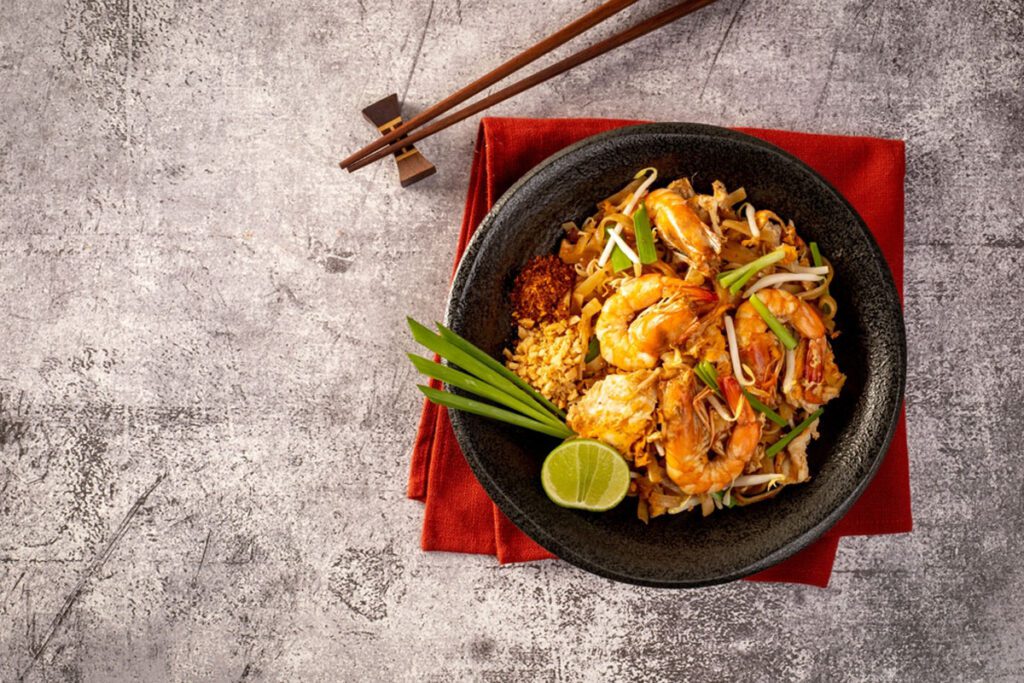
The Rich World of Thai Curries
Thai curries are a cornerstone of the country’s cuisine, known for their rich, aromatic flavors and vibrant colors. Each type of curry has its own unique blend of spices and ingredients, creating a symphony of tastes that are both complex and deeply satisfying. In this part of our culinary journey, we’ll explore the different varieties of Thai curries, their key ingredients, and the cultural significance behind them.
The Essence of Thai Curries
Thai curries are characterized by their use of fresh herbs, spices, and creamy coconut milk, resulting in a harmonious balance of flavors. The primary types of Thai curries are green, red, yellow, and Massaman, each with distinct characteristics and regional variations.
Key Ingredients in Thai Curries:
- Curry Paste: The heart of any Thai curry, made from a blend of chilies, garlic, lemongrass, galangal, and other spices.
- Coconut Milk: Adds a creamy texture and a subtle sweetness, balancing the heat from the chilies.
- Herbs and Spices: Fresh herbs like kaffir lime leaves, Thai basil, and cilantro enhance the aroma and flavor.
- Proteins and Vegetables: Common proteins include chicken, beef, pork, and seafood, while vegetables like eggplant, bamboo shoots, and bell peppers are often used.
Exploring the Main Types of Thai Curries
1. Green Curry (Gaeng Keow Wan)
- Description: Made with green curry paste, coconut milk, chicken or beef, and vegetables like eggplant and bamboo shoots.
- Flavor Profile: Spicy and aromatic with a hint of sweetness from the coconut milk.
- Cultural Significance: Green curry is one of the most popular Thai curries, known for its vibrant green color and rich flavor. It is often enjoyed with rice or rice noodles.
2. Red Curry (Gaeng Daeng)
- Description: Features red curry paste, coconut milk, and a choice of proteins and vegetables.
- Flavor Profile: Slightly milder than green curry but still spicy and rich, with a deep red color from the red chilies.
- Cultural Significance: Red curry is a staple in Thai cuisine, showcasing the balance of heat and creaminess that defines Thai curries.
3. Yellow Curry (Gaeng Karee)
- Description: Made with yellow curry paste, coconut milk, potatoes, and often chicken or beef.
- Flavor Profile: Milder and sweeter than green and red curries, with a distinct yellow hue from turmeric.
- Cultural Significance: Yellow curry reflects Indian influences in Thai cuisine, highlighting the use of turmeric and other spices.
4. Massaman Curry
- Description: A fusion of Thai and Persian flavors, featuring Massaman curry paste, coconut milk, potatoes, peanuts, and beef or chicken.
- Flavor Profile: Mildly spicy, sweet, and nutty, with a rich, thick texture.
- Cultural Significance: Massaman curry is often associated with royal Thai cuisine and is a favorite for special occasions due to its complex, luxurious flavor.
Cultural Significance of Thai Curries
Thai curries are more than just a meal; they are a reflection of Thailand’s history, cultural exchanges, and regional diversity. The use of fresh ingredients and the careful balance of flavors demonstrate the Thai philosophy of harmony and balance in cooking. Curries are often enjoyed in a communal setting, bringing people together and fostering a sense of community.
Regional Variations:
- Central Thailand: Known for its balanced flavors, central Thai curries often feature a mix of sweet, salty, and spicy tastes.
- Northern Thailand: Curries here are milder and more herbaceous, often using ingredients like ginger and turmeric.
- Southern Thailand: Southern curries are known for their intense heat and the use of coconut milk and seafood.
Tips for Cooking Thai Curries at Home
- Fresh Ingredients: Use fresh herbs and spices for the best flavor.
- Curry Paste: Making your own curry paste can significantly enhance the taste, but high-quality store-bought paste is also a good option.
- Balance of Flavors: Taste as you cook and adjust the balance of sweet, sour, salty, and spicy to your preference.
- Cooking Method: Cook the curry paste in oil first to release its flavors before adding other ingredients.
Thai curries offer a delightful exploration of flavors and culinary traditions. Whether it’s the spicy kick of green curry or the creamy richness of Massaman curry, each dish tells a story of Thailand’s diverse cultural heritage.
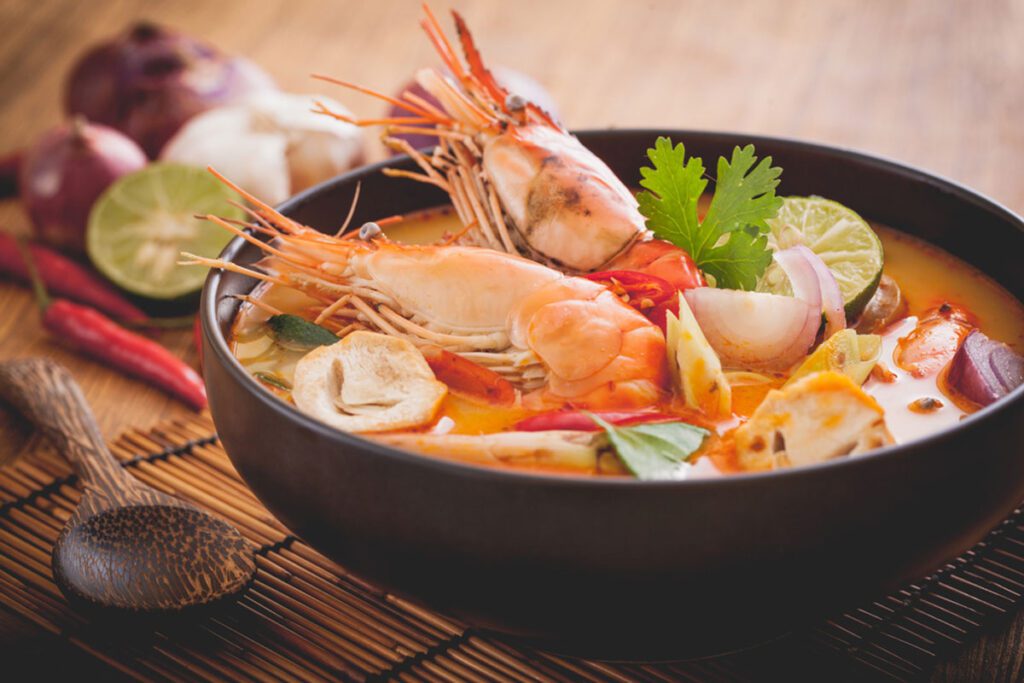
Thai Soups and Salads – Refreshing Flavors and Health Benefits
Thai soups and salads are essential components of the Thai culinary experience. Known for their light yet complex flavors, these dishes offer a refreshing contrast to the richer, spicier curries and stir-fries.
The Refreshing World of Thai Soups and Salads
Thai soups and salads are celebrated for their ability to balance fresh ingredients with bold flavors. They often combine herbs, spices, and citrus elements, resulting in dishes that are both flavorful and nutritious.
Key Ingredients in Thai Soups and Salads:
- Herbs and Spices: Fresh herbs like cilantro, mint, and Thai basil are commonly used, along with spices like chili, garlic, and ginger.
- Citrus Elements: Lime juice and lemongrass add brightness and tanginess to the dishes.
- Fish Sauce and Soy Sauce: These provide the umami element, enhancing the depth of flavor.
- Fresh Vegetables and Fruits: Ingredients like green papaya, cucumbers, tomatoes, and various leafy greens are staples in Thai salads.
Exploring Popular Thai Soups and Salads
1. Tom Yum Goong (Spicy Shrimp Soup)
- Description: A hot and sour soup made with shrimp, mushrooms, tomatoes, lemongrass, galangal, kaffir lime leaves, and chili.
- Flavor Profile: Spicy, sour, and fragrant, with a balance of heat from the chilies and tanginess from the lime juice.
- Cultural Significance: Tom Yum Goong is one of Thailand’s most famous soups, often enjoyed as an appetizer or a main course. It embodies the essence of Thai cuisine with its bold flavors and aromatic ingredients.
2. Tom Kha Gai (Chicken Coconut Soup)
- Description: A creamy soup made with chicken, mushrooms, coconut milk, galangal, lemongrass, and kaffir lime leaves.
- Flavor Profile: Mildly spicy and slightly sweet, with a rich, creamy texture from the coconut milk.
- Cultural Significance: Tom Kha Gai is a comforting soup that showcases the use of coconut milk in Thai cooking. It’s a favorite for its soothing, aromatic qualities.
3. Som Tum (Green Papaya Salad)
- Description: A spicy and tangy salad made from shredded green papaya, tomatoes, green beans, peanuts, and dried shrimp, dressed with lime juice, fish sauce, and chilies.
- Flavor Profile: Spicy, sour, and crunchy, with a refreshing combination of textures and flavors.
- Cultural Significance: Som Tum is a staple in Thai street food culture and is especially popular in the northeastern region (Isaan). It’s a versatile dish that can be enjoyed on its own or as a side.
4. Larb (Spicy Salad)
- Description: A minced meat salad, usually made with chicken, pork, or beef, mixed with lime juice, fish sauce, herbs, and roasted rice powder.
- Flavor Profile: Spicy, tangy, and slightly nutty from the roasted rice powder, with fresh herb flavors.
- Cultural Significance: Larb is a traditional dish from Laos and the Isaan region of Thailand. It is often served with sticky rice and is a popular dish for celebrations and gatherings.
5. Yam Woon Sen (Glass Noodle Salad)
- Description: A salad made with glass noodles, shrimp, ground pork, vegetables, and a spicy lime dressing.
- Flavor Profile: Light, tangy, and slightly spicy, with a mix of chewy and crunchy textures.
- Cultural Significance: Yam Woon Sen is a popular dish in Thailand, enjoyed for its light and refreshing qualities. It’s often served as a starter or a side dish.
Health Benefits of Thai Soups and Salads
Thai soups and salads are not only delicious but also offer numerous health benefits:
- Nutrient-Rich: The fresh vegetables and herbs used in these dishes are rich in vitamins, minerals, and antioxidants.
- Low in Calories: Many Thai soups and salads are low in calories, making them a healthy choice for those looking to maintain or lose weight.
- Hydrating: Soups like Tom Yum Goong and Tom Kha Gai provide hydration, while the fresh ingredients in salads help keep you refreshed.
- Immune-Boosting: Ingredients like garlic, ginger, and chili have immune-boosting properties, helping to protect against illnesses.
Cultural Significance of Soups and Salads
In Thai culture, soups and salads play a crucial role in meals. They are often served alongside other dishes to provide a balanced and harmonious dining experience. These dishes reflect the Thai philosophy of using fresh, local ingredients to create meals that are both satisfying and nutritious.
Thai soups and salads offer a delightful exploration of flavors and textures, embodying the balance and freshness that are hallmarks of Thai cuisine. From the spicy kick of Som Tum to the creamy comfort of Tom Kha Gai, these dishes are a testament to the culinary artistry of Thailand.
Thai Desserts and Beverages – A Sweet Conclusion
Thai desserts and beverages offer a delightful end to any meal, showcasing a unique blend of flavors, textures, and colors. These sweet treats often incorporate tropical fruits, coconut, and aromatic ingredients, providing a perfect balance to the spicier, savory dishes of Thai cuisine.
The Sweet World of Thai Desserts
Thai desserts are known for their intricate preparations and the use of natural ingredients like coconut, palm sugar, and tropical fruits. These desserts often have a delicate sweetness and are visually stunning, making them a feast for both the eyes and the palate.
Key Ingredients in Thai Desserts:
- Coconut: Used in various forms, including coconut milk, cream, and shredded coconut.
- Palm Sugar: Adds a rich, caramel-like sweetness.
- Tropical Fruits: Mango, banana, durian, and other tropical fruits are commonly used.
- Sticky Rice: Often sweetened and paired with fruits or coconut.
Exploring Popular Thai Desserts and Beverages
1. Mango Sticky Rice (Khao Niew Mamuang)
- Description: A classic Thai dessert made with sweet sticky rice, fresh mango slices, and a drizzle of coconut milk.
- Flavor Profile: Sweet, creamy, and slightly salty, with a delightful contrast between the sticky rice and juicy mango.
- Cultural Significance: Mango Sticky Rice is a favorite dessert during the mango season and is enjoyed at festivals and celebrations.
2. Thai Iced Tea (Cha Yen)
- Description: A refreshing beverage made from strong brewed tea, sweetened with sugar and condensed milk, and served over ice.
- Flavor Profile: Sweet and creamy, with a robust tea flavor and a hint of spices.
- Cultural Significance: Thai Iced Tea is a popular street drink, perfect for cooling down in Thailand’s tropical climate.
3. Coconut Ice Cream (I-Tim Kati)
- Description: Creamy ice cream made from coconut milk, often served with toppings like peanuts, sweet corn, and sticky rice.
- Flavor Profile: Rich and creamy, with a natural sweetness from the coconut.
- Cultural Significance: Coconut Ice Cream is a beloved street food treat, often enjoyed as a refreshing snack.
4. Thai Pumpkin Custard (Sangkhaya Fak Thong)
- Description: A custard made from coconut milk, palm sugar, and eggs, steamed inside a hollowed-out pumpkin.
- Flavor Profile: Sweet and creamy, with a smooth texture and a hint of caramel from the palm sugar.
- Cultural Significance: This dessert is often served during special occasions and festivals, showcasing the use of local ingredients.
5. Lod Chong (Pandan Noodles in Coconut Milk)
- Description: A dessert made from green pandan-flavored noodles served in sweetened coconut milk with shaved ice.
- Flavor Profile: Sweet and creamy, with a refreshing, cool texture from the shaved ice.
- Cultural Significance: Lod Chong is a popular dessert during hot weather, enjoyed for its cooling and refreshing qualities.
Cultural Significance of Thai Desserts and Beverages
Thai desserts and beverages play a vital role in Thai culture, often enjoyed during festivals, religious ceremonies, and family gatherings. They reflect the Thai emphasis on balance, harmony, and the use of natural ingredients. These sweet treats are not only a delight to eat but also a way to experience the rich cultural heritage of Thailand.
Tips for Making Thai Desserts at Home
- Use Fresh Ingredients: Opt for fresh coconut milk and tropical fruits for the best flavor.
- Balance of Sweetness: Adjust the sweetness to your preference, keeping in mind that Thai desserts often have a delicate balance of sweet and creamy.
- Presentation: Thai desserts are known for their beautiful presentation, so take the time to arrange the ingredients attractively.
- Cultural Context: Understanding the cultural significance of the desserts can enhance your appreciation and enjoyment of the dishes.
Thai desserts and beverages provide a sweet and satisfying conclusion to our virtual culinary journey through Thailand. From the iconic Mango Sticky Rice to the refreshing Thai Iced Tea, these treats offer a glimpse into the rich and diverse flavors of Thai cuisine. We hope this journey has inspired you to explore and appreciate the culinary artistry of Thailand, whether by trying new recipes at home or experiencing authentic Thai cuisine in your travels. Thank you for joining us on this delicious adventure!
Our Favorite Thai Recipes
Description: Tom Kha Gai is a rich and aromatic Thai soup made with coconut milk, galangal, lemongrass, kaffir lime leaves, and tender …
Description: Kai Jeow is a classic Thai street food dish known for its crispy edges and fluffy interior. It is typically served …
Description: Moo Ping, or Thai grilled pork skewers, is a popular street food in Thailand. These succulent and flavorful skewers are marinated …
Description: Pad See Ew is a popular Thai stir-fried noodle dish known for its wide rice noodles, tender vegetables, and savory sauce. …
Description: Mango Sticky Rice, known as Khao Niew Mamuang in Thai, is a beloved Thai dessert that combines sweet mangoes with sticky …
Description: Panang Curry, also known as Phanaeng Curry, is a flavorful Thai curry known for its rich and creamy texture. This curry …
Description: Massaman Curry is a unique and aromatic Thai curry known for its rich flavors and creamy texture. Originating from Southern Thailand, …
Description: Green Curry, or Gaeng Keow Wan in Thai, is a vibrant and aromatic Thai curry known for its striking green color …
Description: Tom Yum Goong is a classic Thai soup known for its bold flavors of lemongrass, lime, chili, and shrimp. This hot …
